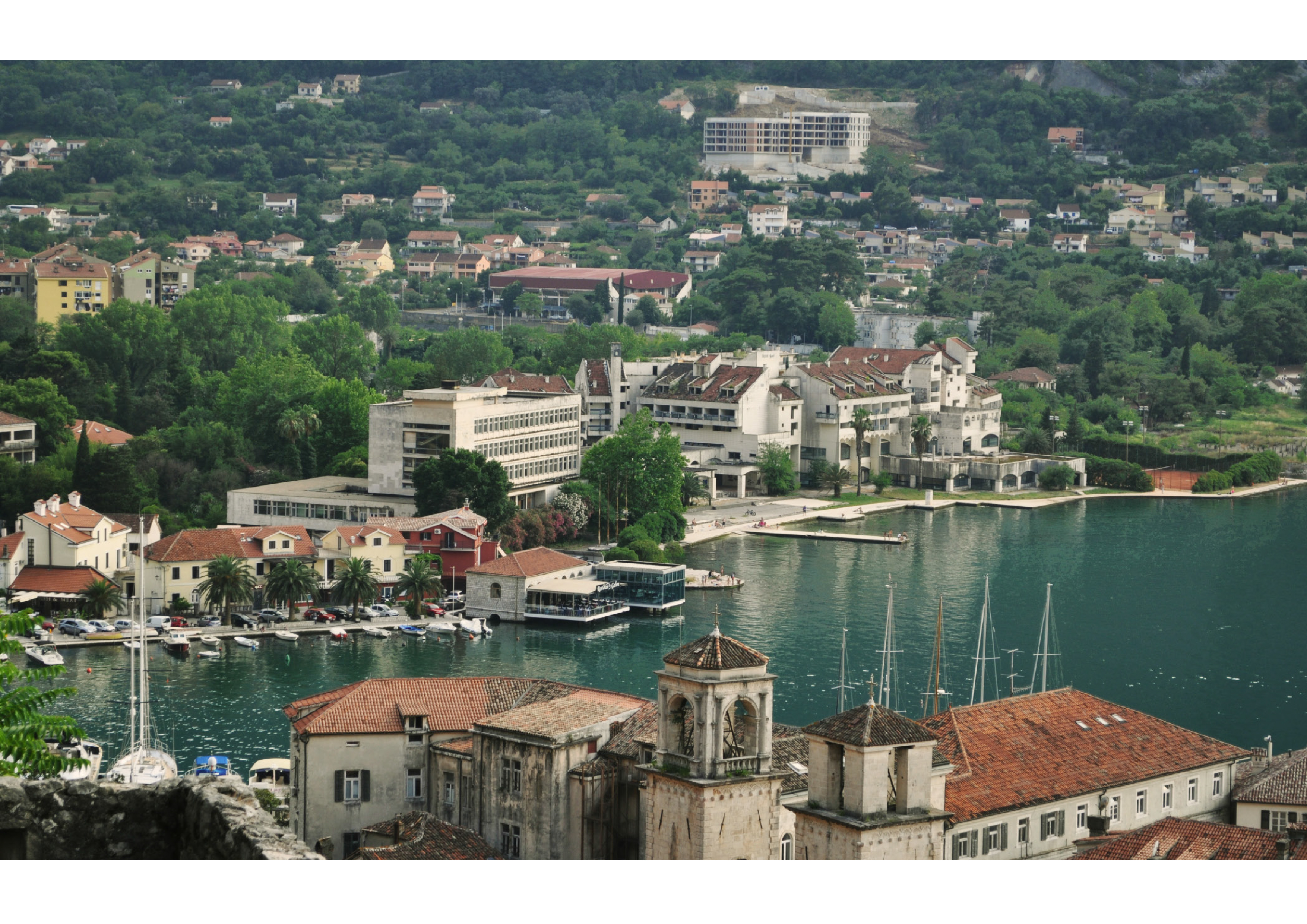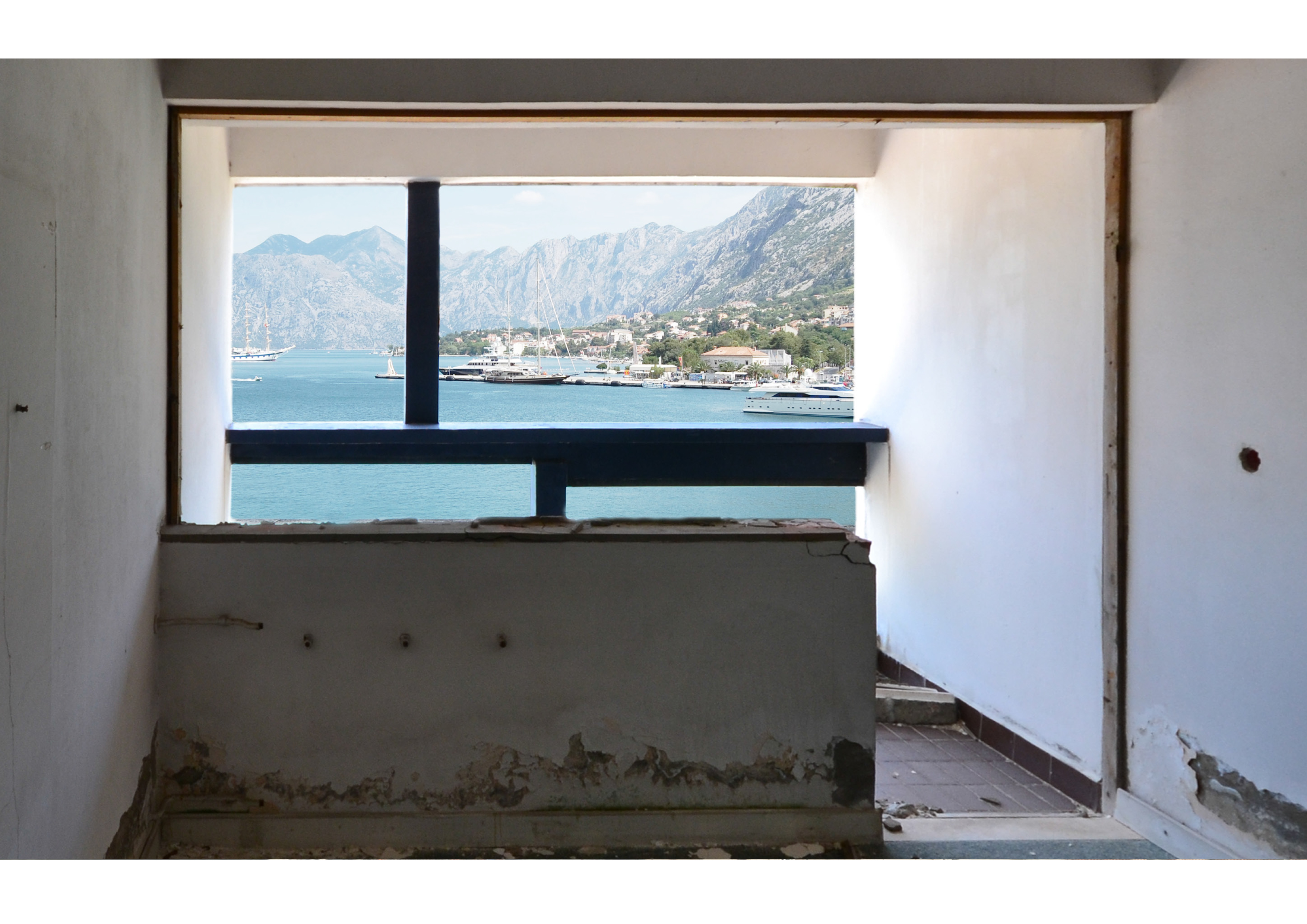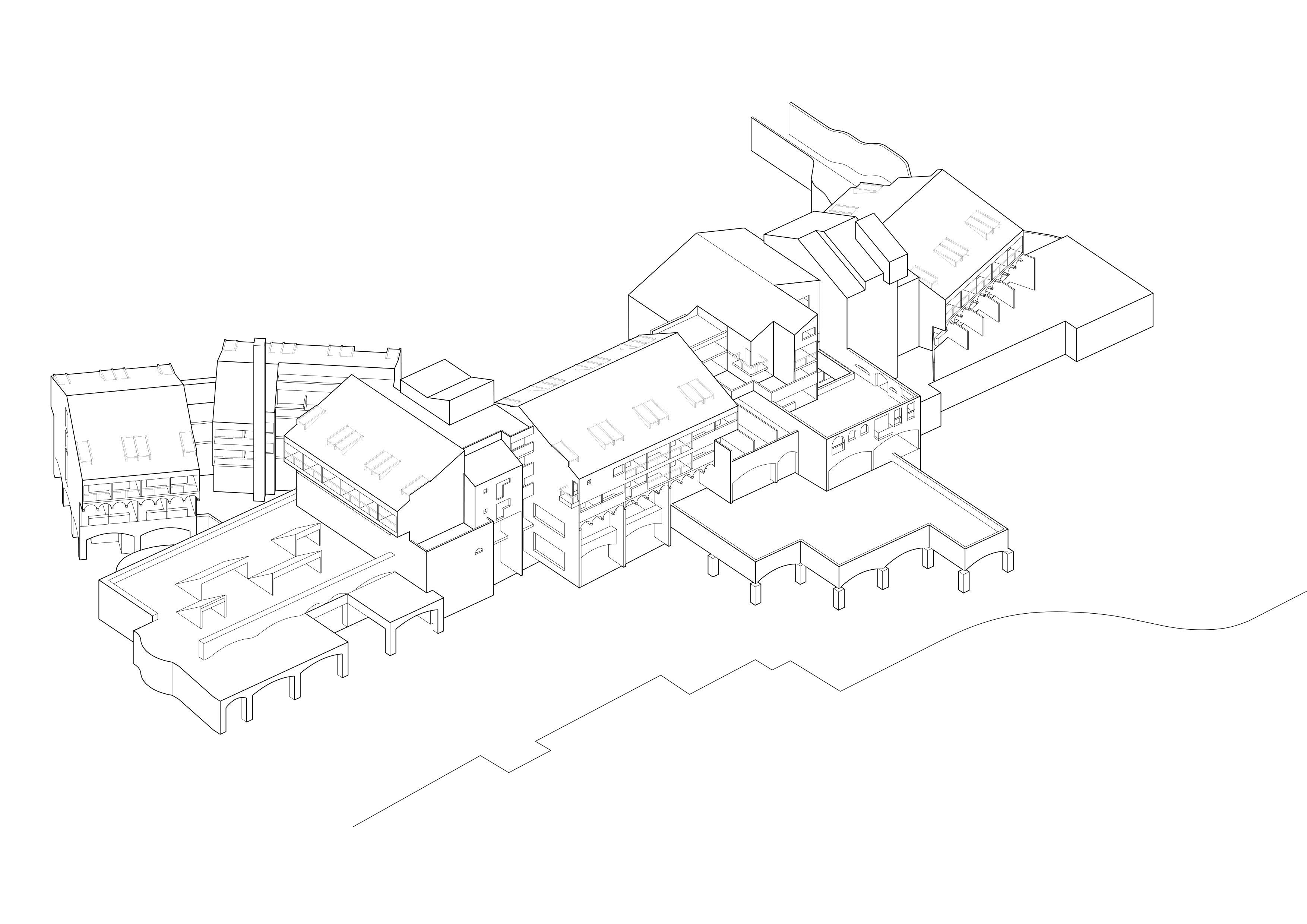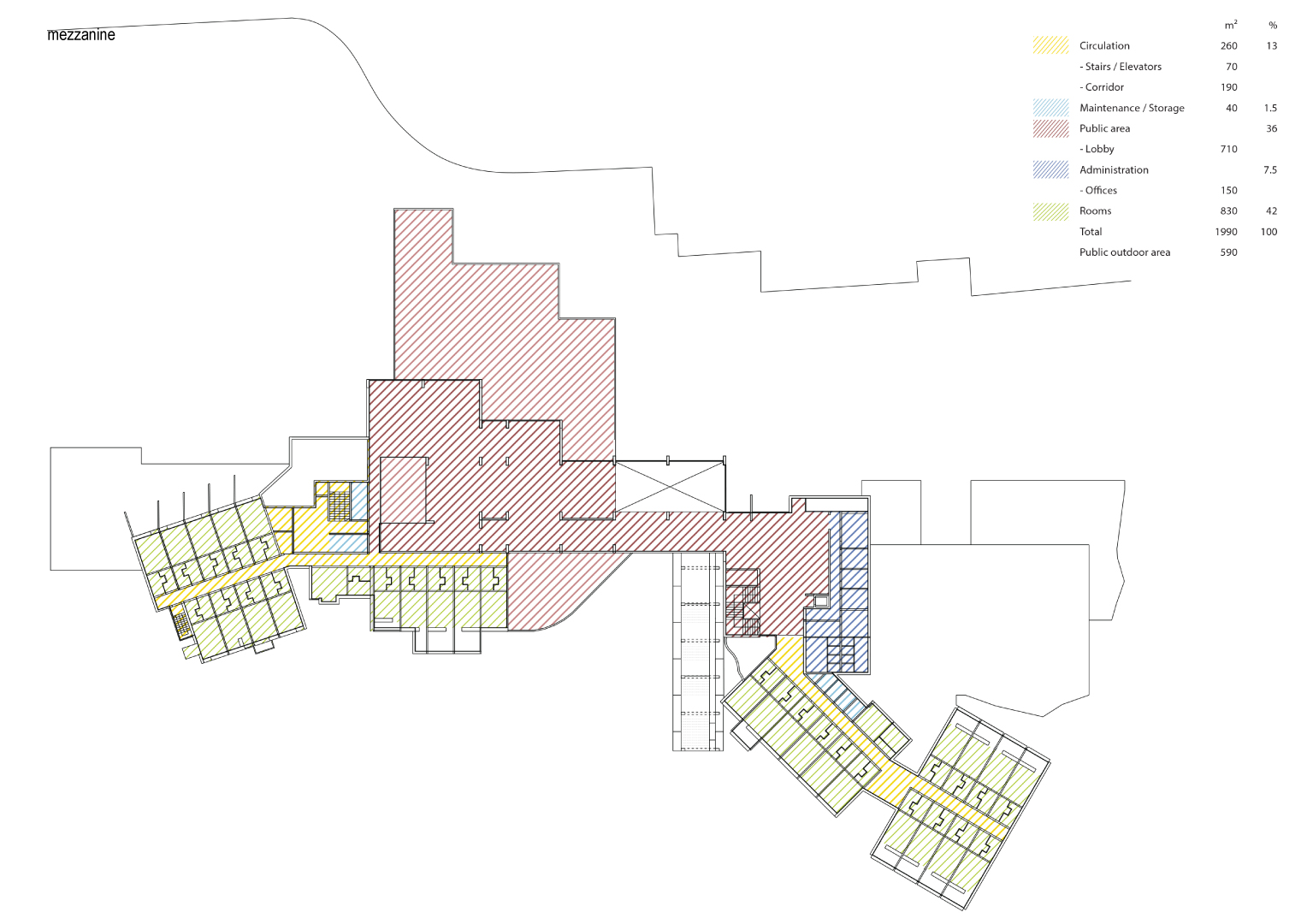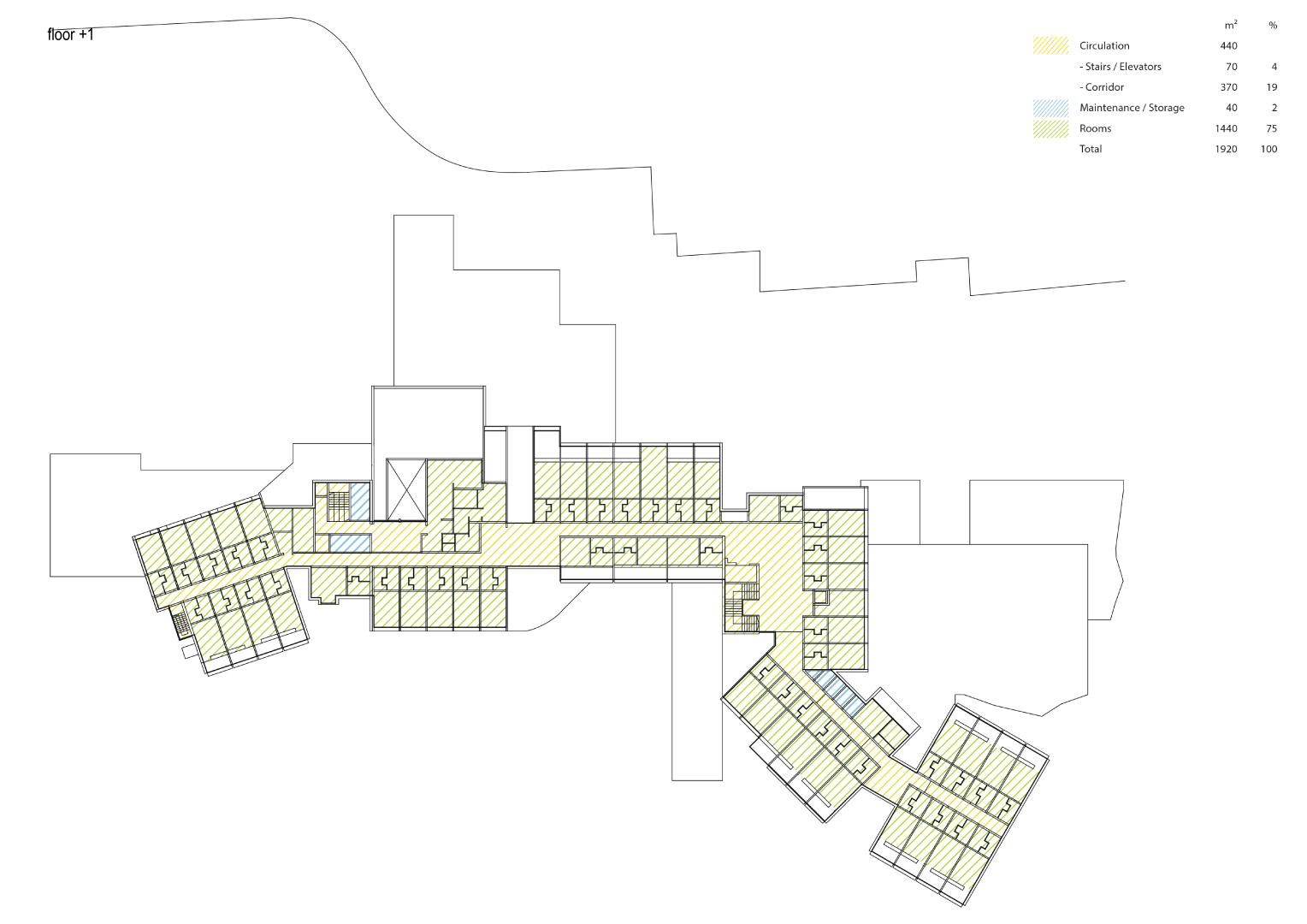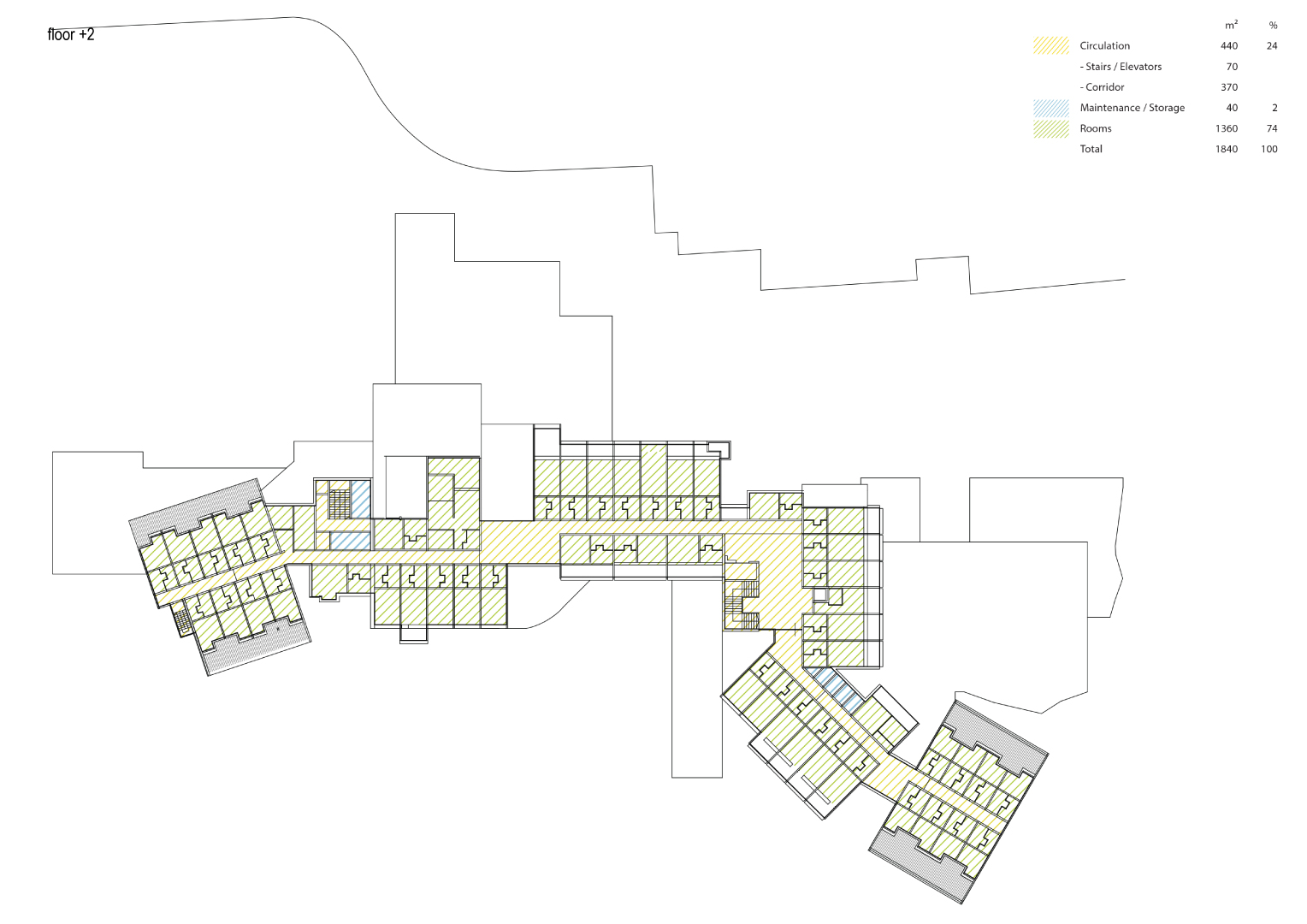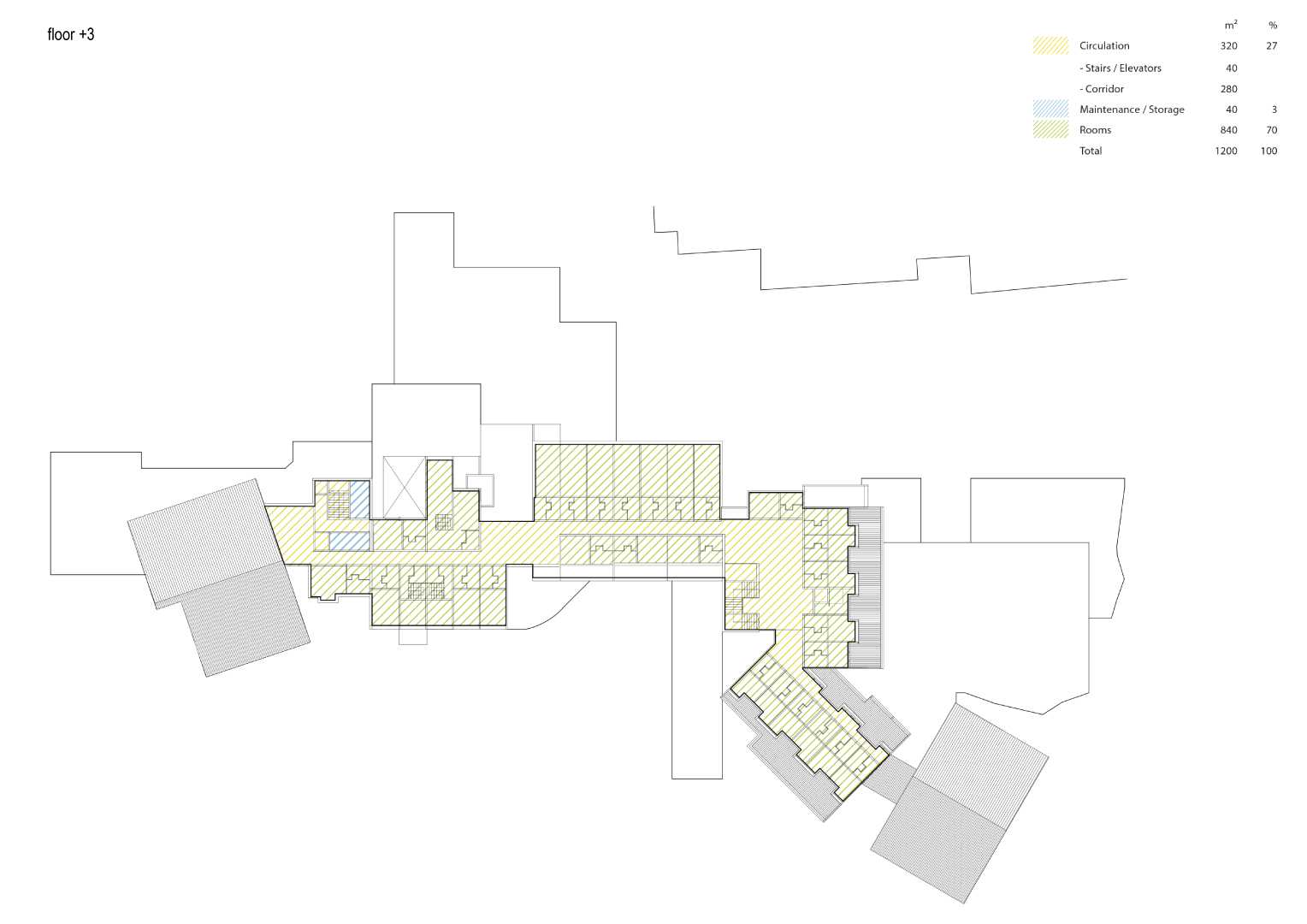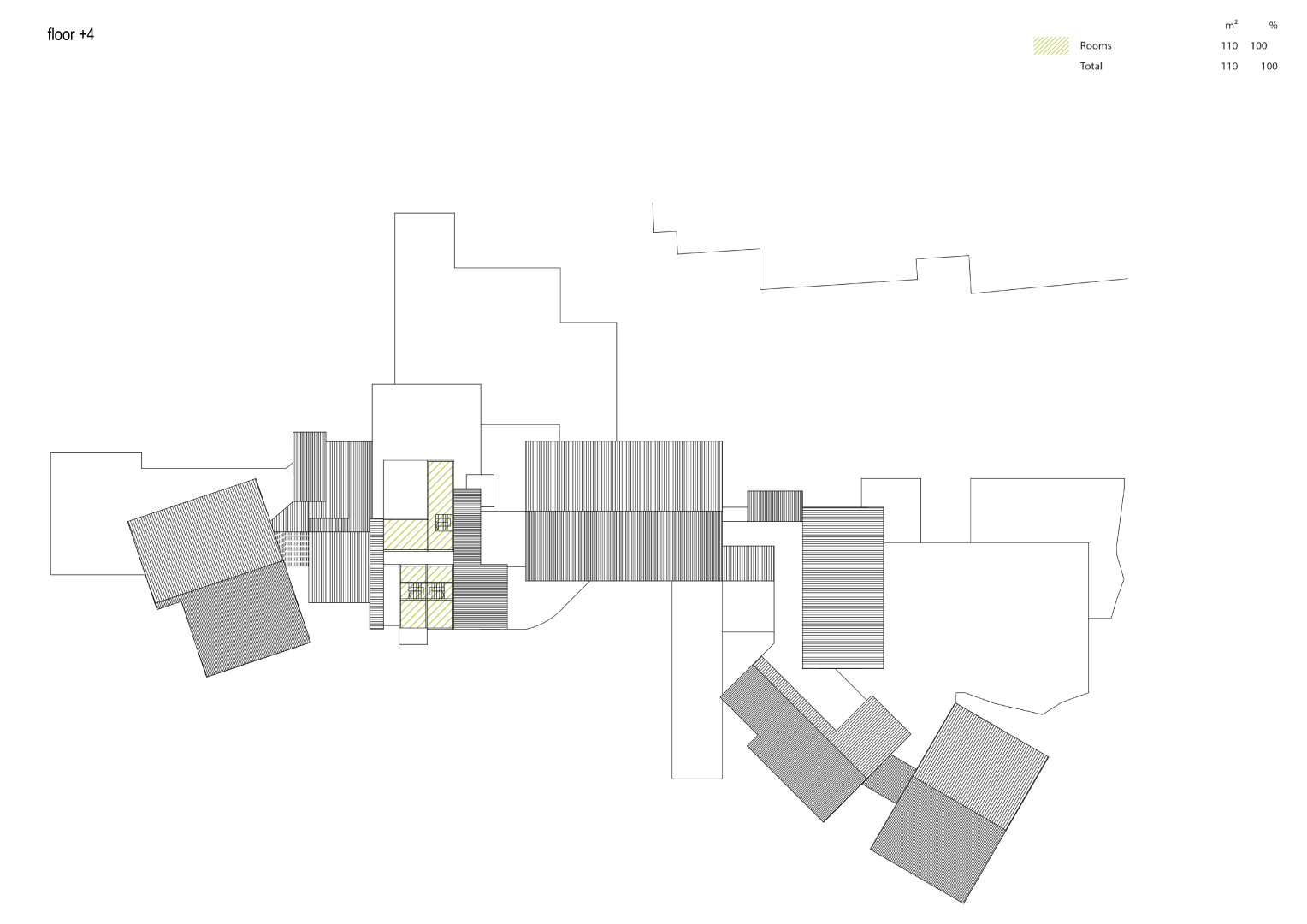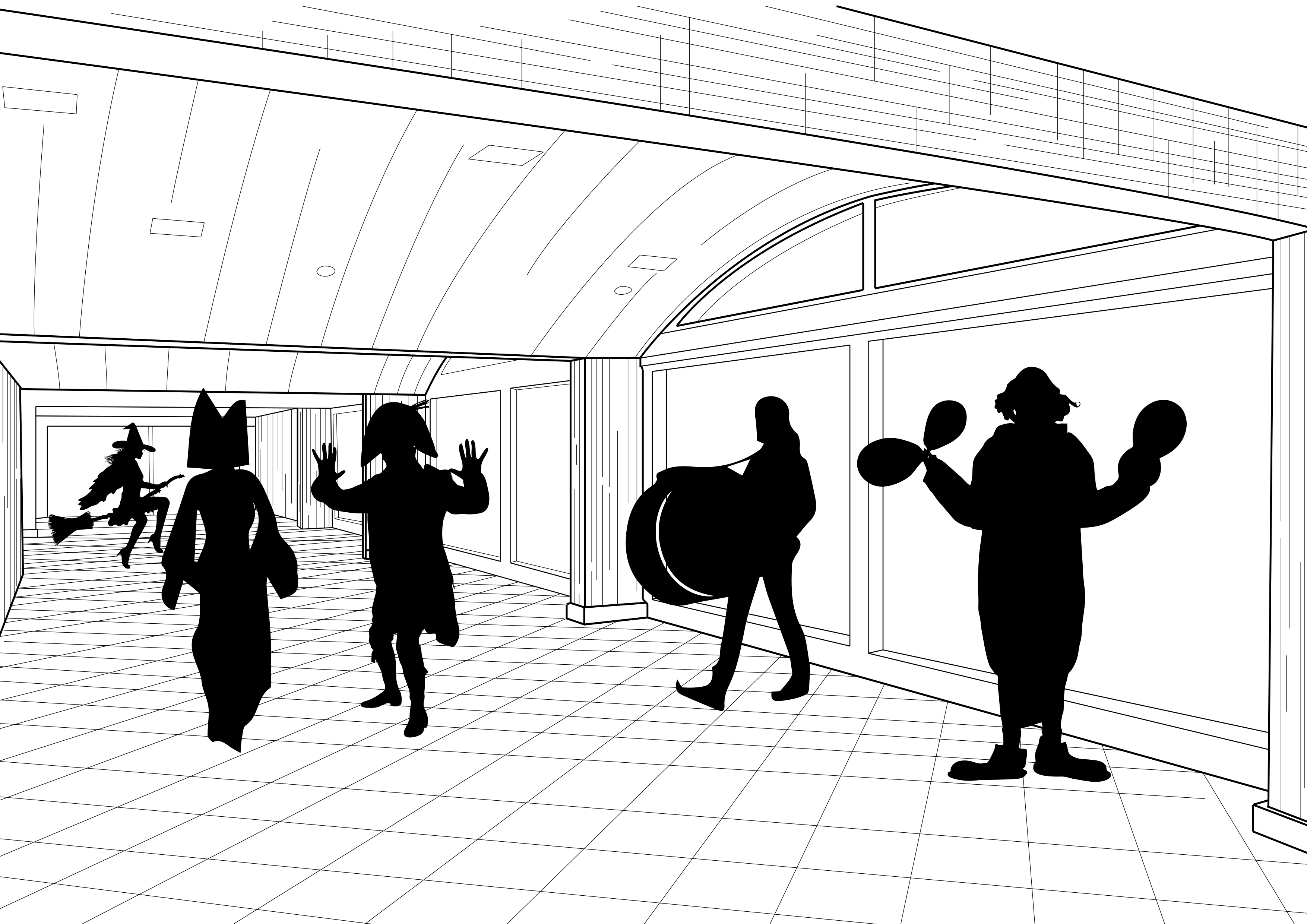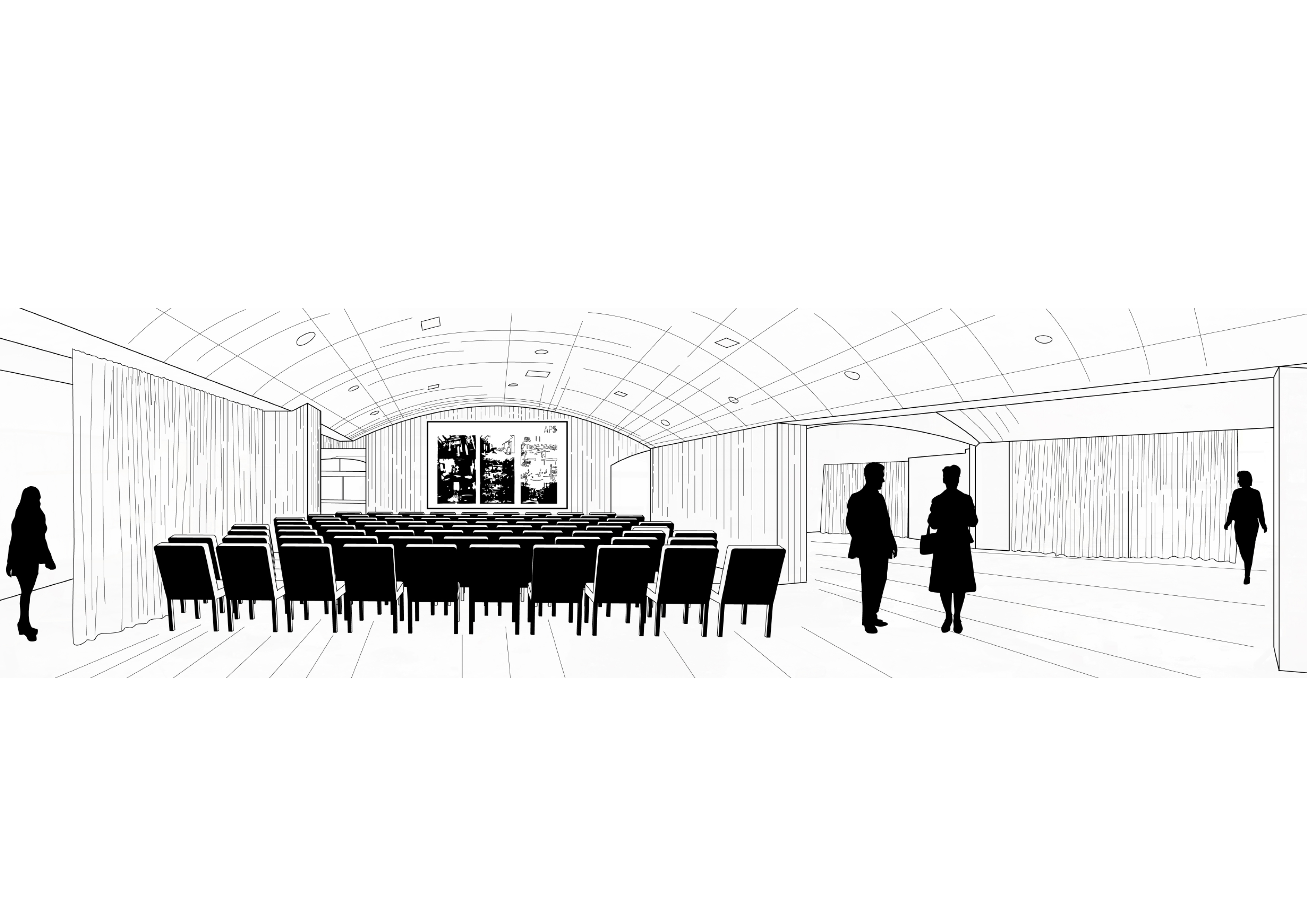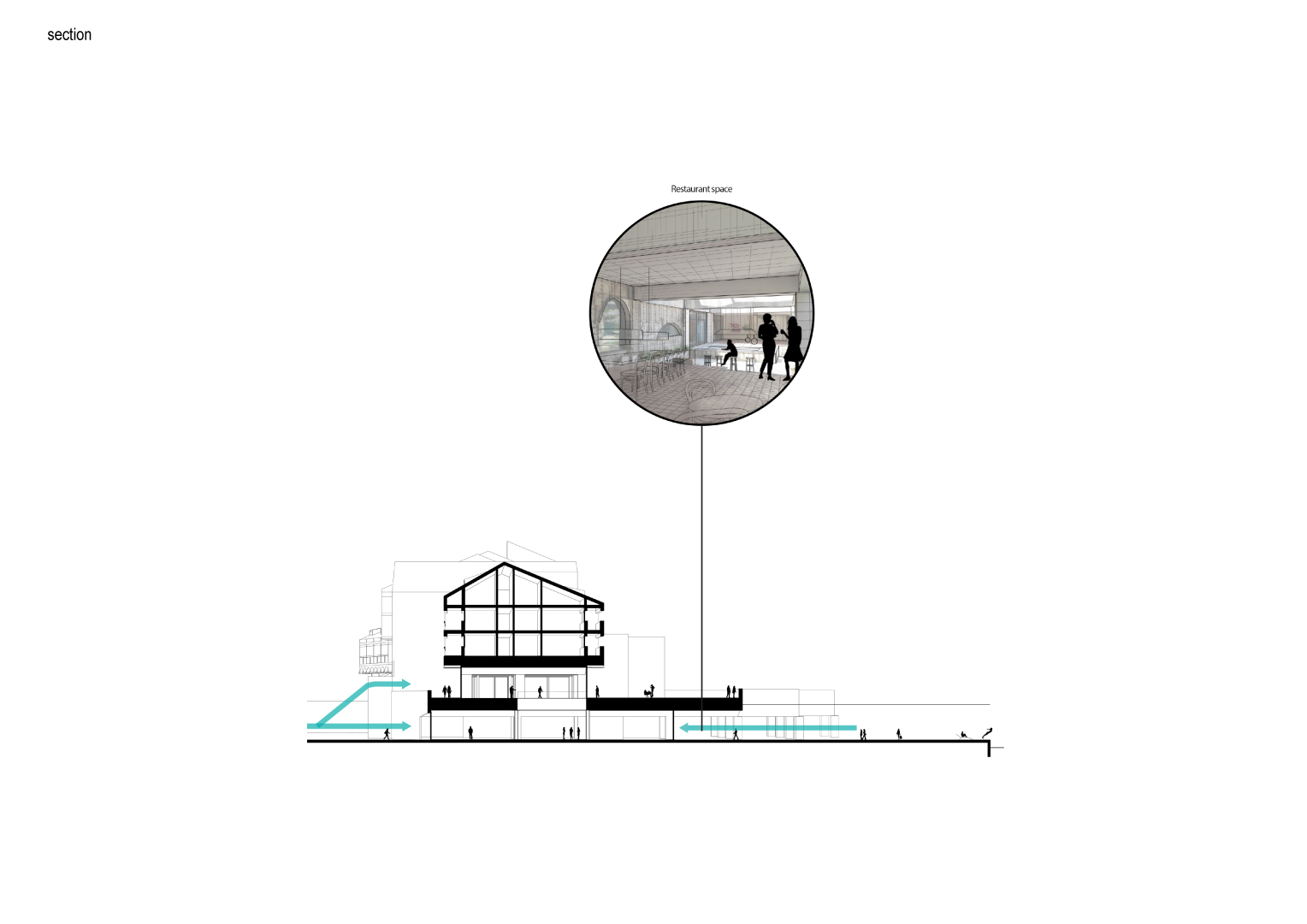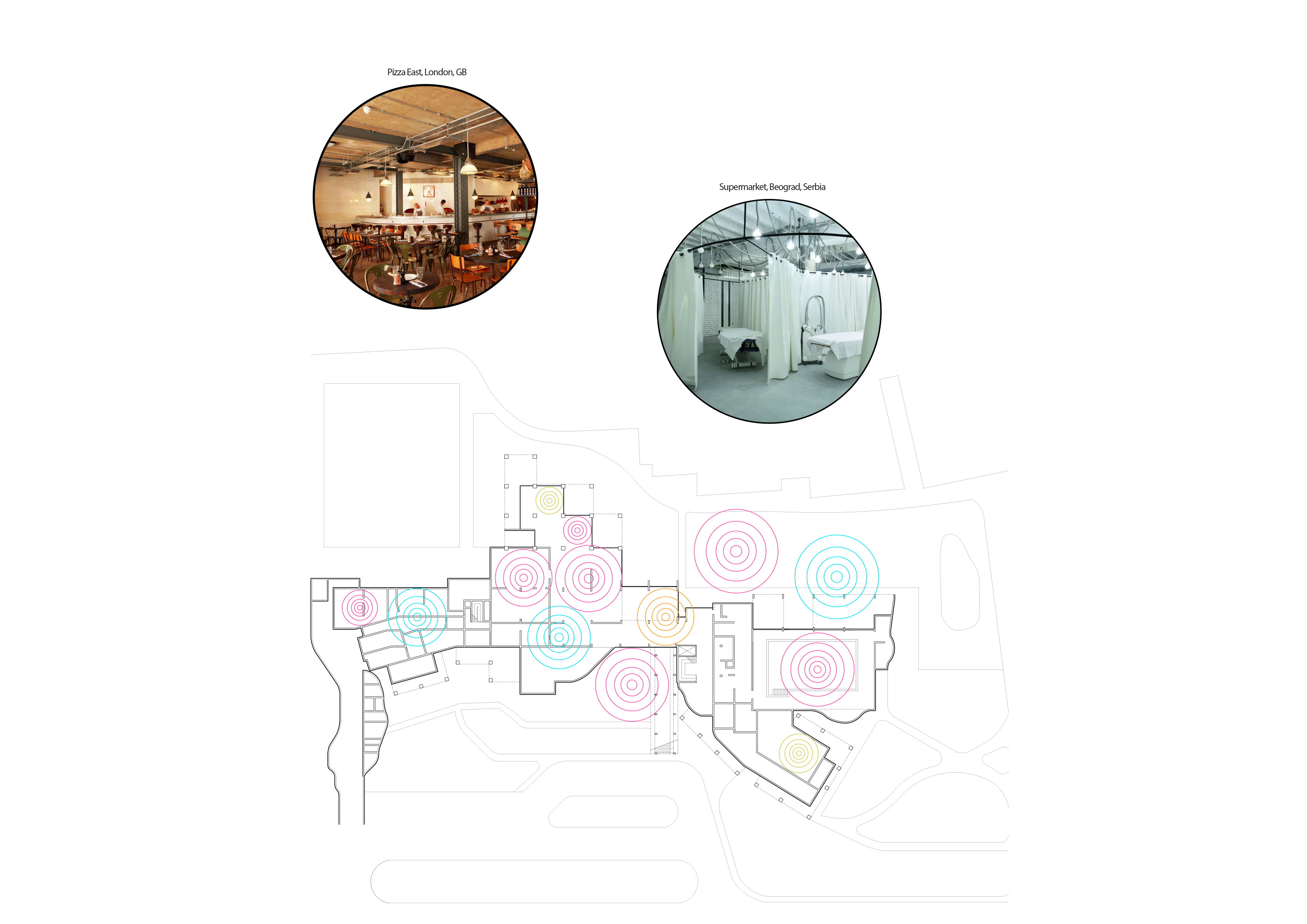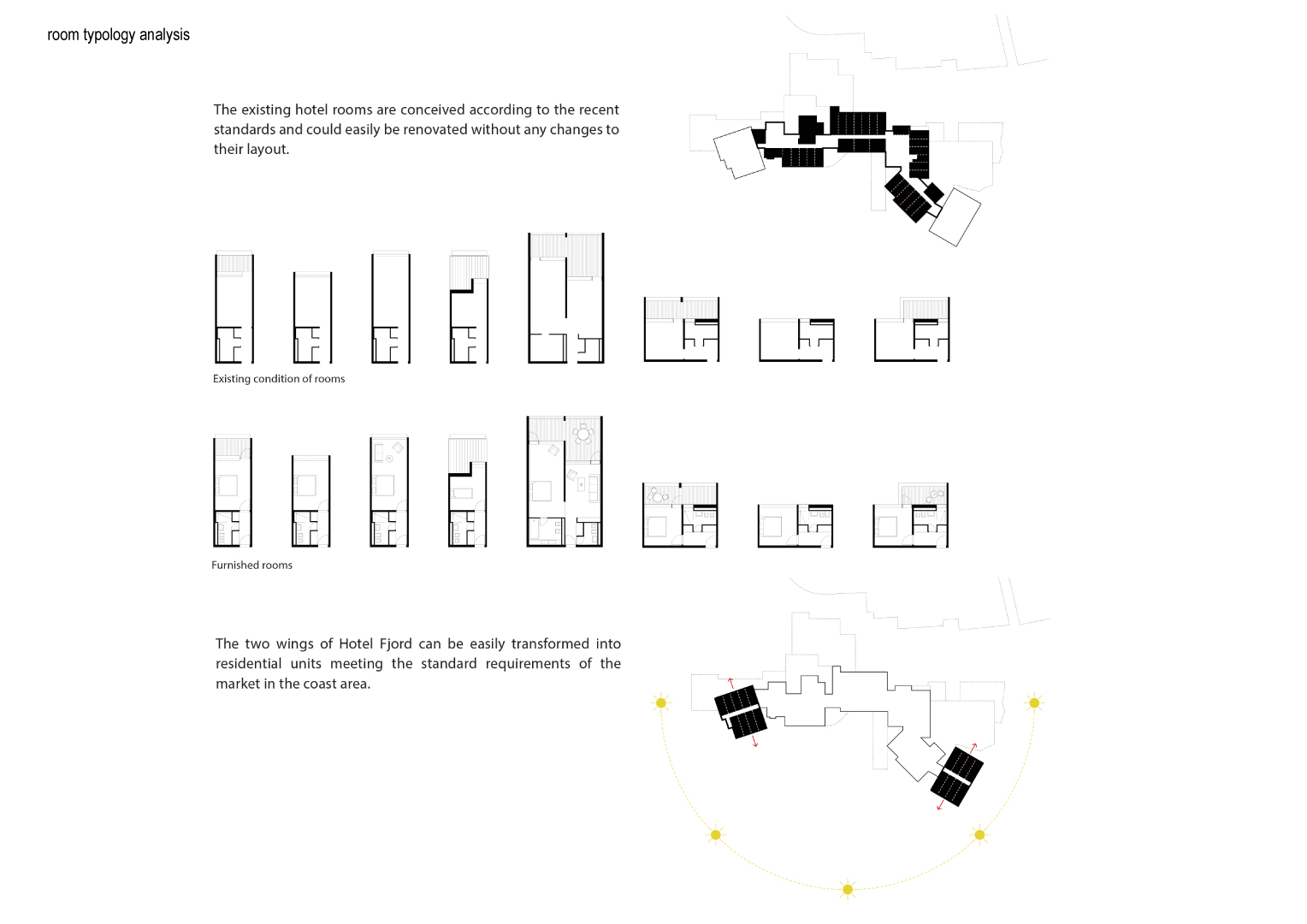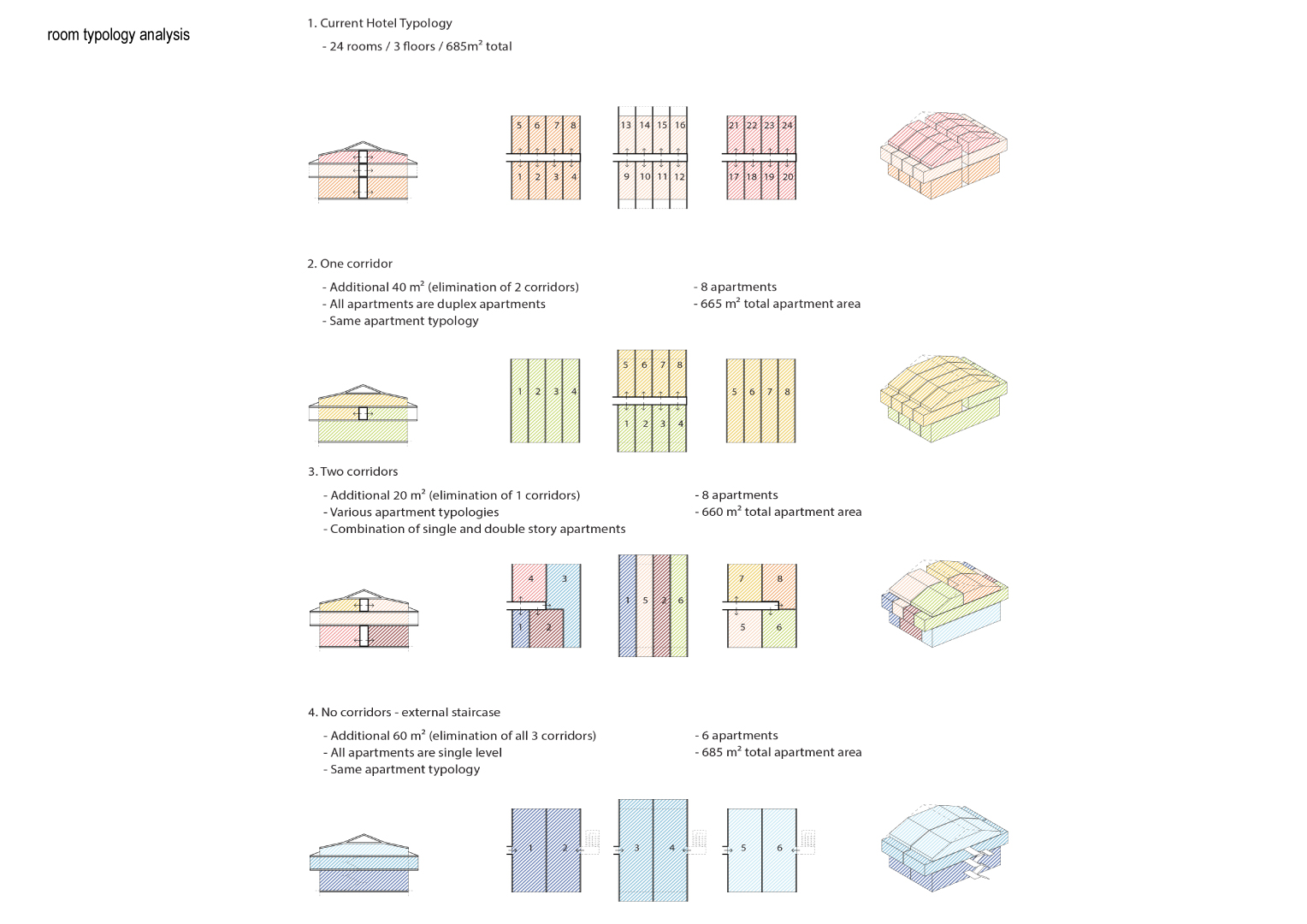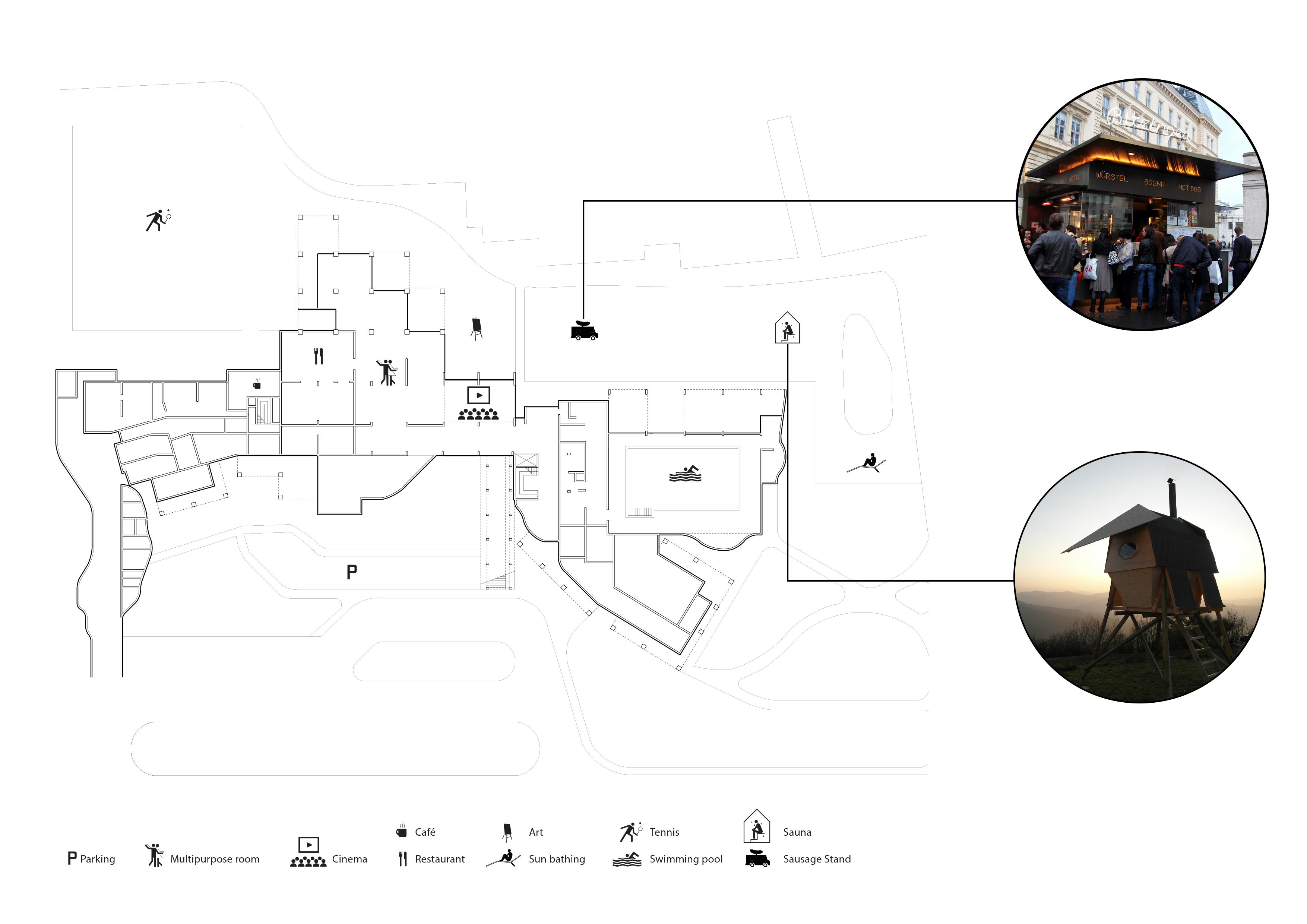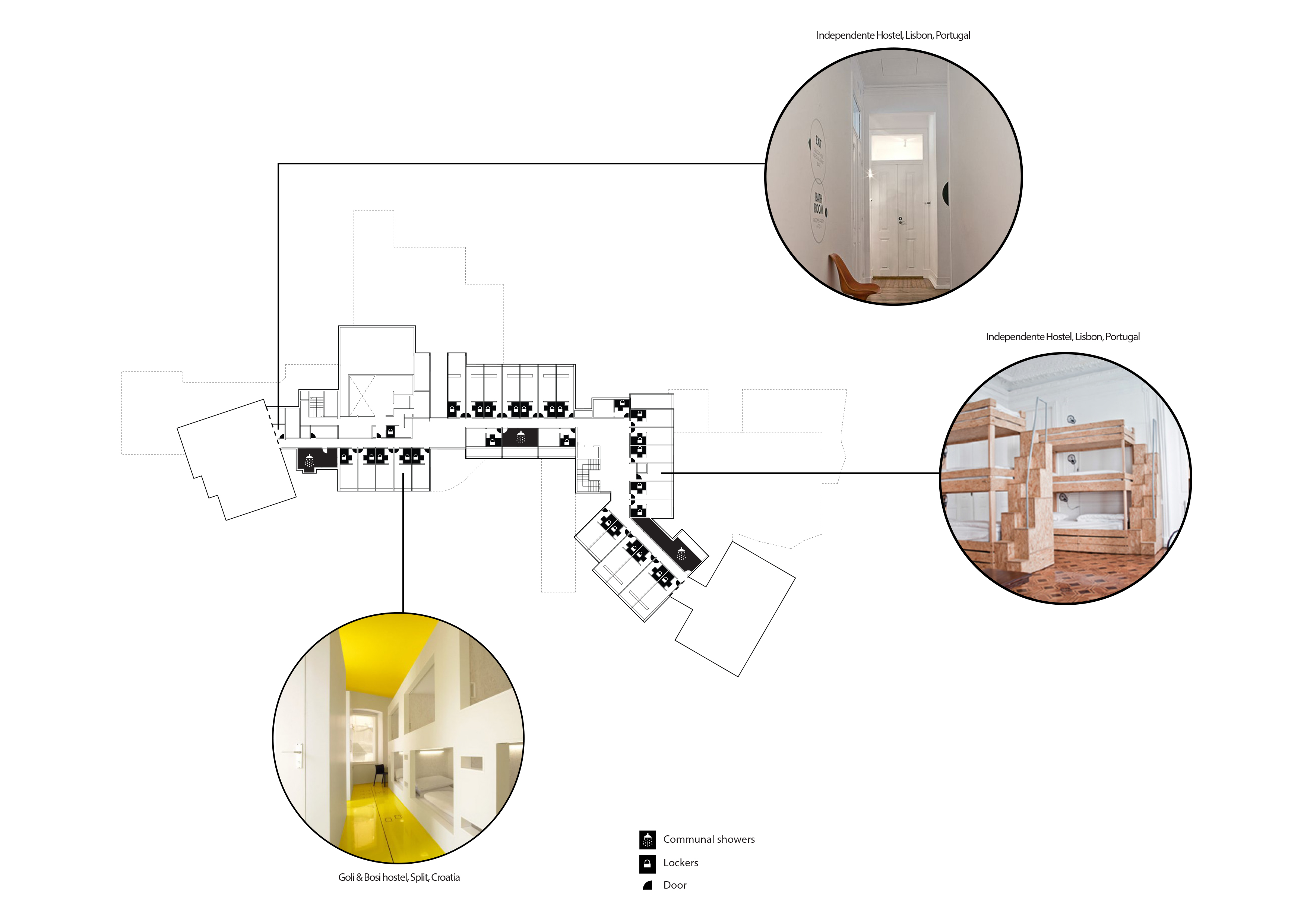Grand Hotel Fjord, Kotor
Type
Project
Design
2013
Location
Kotor, Montenegro
Team
TEAM DVARP
Dijana Vučinić
with Jovana Miljanić, Marija Ičević
TEAM HHF
Herlach Hartmann Frommenwiler
with Ivana Barišić, Zdenek Liška, Jure Sadar, Jelena Vučić
TEAM SADAR+VUGA
Boštjan Vuga
with Nina Vuga
ANDREAS AND ILKA RUBY
WHAT’S AT STAKE?
THE POTENTIALS OF HOTEL FJORD
- Hotel Fjord as Kotor’s gateway into the 21st century
When you see Hotel Fjord in Kotor for the first time, you may well question whether this building has any value. Standing empty for years now, the construction has severely degraded. And if nothing else happens, the only option will be to tear it down one day. But it would be a tremendous mistake, because Hotel Fjord represents an incredible potential for Kotor – it could be its gateway into the 21st century. Today, the historical center of Kotor is a beautiful museum of its past. It’s lovely, but it’s also frozen. Incapable to develop itself beyond its current status quo, it cannot create a contemporary dimension, let a lot a vision, for the future. But that is exactly what Hotel Fjord could do for Kotor, because it is a building strangely suspended between the past, the present and the future.
Built in 1986, Hotel Fjord clearly embodied a bold modern project in its time. But unlike the bulk of grand projects built during 1960s and 1970s in Ex-Yugoslavia, it is no longer subscribed to the of heroic modernism that so often alienates historical heritage. It is already born out of the new postmodern sensibility of the 1980s, which sought to anchor the present in the past. Whereas a modernist architecture probably would have incorporated the entire program of the hotel in one massive volume, with little to no regard to the context, the architect of Hotel Fjord, Zlatko Ugljen, consciously organized the building mass in a constellation of houses. With its irregular facades, individually sized windows and a highly differentiated set of terraces and public spaces on different levels, the hotel complex reads less like a single building but more like a piece of urban fabric.
Ugljen made a clear reference gesture contextualizing the new hotel in the existing urban fabric and cultural memory of the old Kotor. In that sense, Hotel Fjord makes a sensible effort at integrating a longer history while making an important programmatic contribution to its present. Thanks to this conscious position between history and present, Hotel Fjord is predestined to become a key protagonist of Kotor’s development into its future.
- Target group multiplication for tourism
So far Kotor caters to a special tourist clientele, which is primarily interested in historical sightseeing. They use the old town of Kotor as a 1:1 scale exhibition piece of the city’s history going back to the days of its Venetian occupation. It’s a form of tourism that is attractive to a specific age group of tourists – basically 50+. Younger people don’t find a lot to do in Kotor – beach culture – there are no beaches close to the city center; there are too few facilities of contemporary urban youth culture such as bars, dance clubs, concert venues, art spaces. But you need exactly this kind of urban cultural infrastructure in order to attract a younger urban generation as tourists, and its exactly this kind of target group that is instrumental for cities that want to increase their tourist attraction as a whole. Currently Kotor attracts a substantial number of tourists coming by cruise ships, however, they don’t stay there long enough. And because the can spend the night onboard of the ships, the hotel industry does not really profit of this kind of tourism economically.
Apart from longer staying periods you need a mixed audience of different generations and from different countries in order to create a sustainable tourism. Barcelona and Berlin are significant references for these developments. Until the early 1990s, Barcelona tourism was mainly based on cultural sightseeing with Gaudi’s architecture and several Museums as main attractions). With the 1992 Summer Olympic Games held in Barcelona, the city gained a completely new profile. It freed the ocean shore zone from the industrial infrastructure, which had separated the city from the sea until then, and created an attractive urban beachfront. It created new museums and public institutions which taken all together created a new public realm in the city that provided a new space to discover for the inhabitants of the city – and it attracted a new kind of tourist clientele. Many urban outgoing venues started to mushroom all around the historical center – cafés, bars, restaurants, dj-clubs, galleries, new museums – which gave Barcelona the reputation as a hotspot of contemporary urban culture. Affordable Hotels and cheap flight connections from all across Europe paved the way for a whole new class of tourists – young urban students and professionals – who came to Barcelona for a weekend to simply enjoy the city.
Berlin repeated the same development in the 2000s, and is currently one of the central hubs of city tourism worldwide. As one of the less affluent big cities of Germany with almost no industry, a low income level, but also an equally inexpensive cost of living, Berlin is able to attract large quantities of tourists from both Europe and beyond, who are keen to experience a kind of urban culture which is in continuous flux and not as saturated as other more established European cultural cities (Paris, Rome, Zurich etc.).
Our thesis is that Hotel Fjord has all preconditions to host this type of young urban tourism as well, and here are the reasons why:
2.1. Esthetic of the Unfinished
To embellish the current condition of Hotel Fjord into a streamlined boutique kind of place with white walls and polished floors – probably the primal impulse of any realestate developer – would be the biggest mistake one could make. Because its unfinished architectural esthetic represents exactly the type of spatial environment which creative milieus have always been drawn to: Think of Andy Warhol’s setting up his studio („Factory“) in a raw industrial space, which became a model for the artist’s studio in general; think of New York’s art galleries which preferably established themselves in run-down neighborhoods (first Soho, then Chelsea, then Lower East Side etc.), think of unusual bar-restaurants such as Supermarket, Belgrade, or cult music clubs like Berghain, Berlin, or experimental Art Centers (Dom Mladih, Split; Palais de Tokyo, Paris) – which are all consciously placed in rough industrial spaces with an highly tactile and physical background ambiance that makes everything presented in this kind of space highly special and auratic.
The makers behind these projects are young creative professionals interested in an emerging urban culture which is always in flux – so they logically feel much more comfortable in a kind of spatial environment that is open, unfinished and receptive for things to come, as opposed to the polished corporate chic of conventional spaces.
2.2. Added value by superb historical and scenic setting
The „wild“, unfinished quality of the Hotel Fjord is actually even emphasized by the contrast to the distinguished cultural ambiance of the old town of Kotor and the larger-than-life sea scape of Boka Bay and the majestic mountain ranges of Orjen und Lovćen framing the town. This would make the emerging hot spot of Hotel Fjord and New Kotor stand out against established scenes of urban youth culture in cities. Historically, the DJ music cultures from big cities have always generated important spin-offs in remote exotic locations. Thus Ibiza, Spain, became a Mecca for House Music, just like Goa, India, produced a unique culture of beach Techno Raves that boasted the experience of music by the added values of open air space and exotic scenery.
2.3. Exchange between local and global cultural scenes
Developing Hotel Fjord into a touristic hotspot of the contemporary urban culture of the young European creative class would simultaneously improve the situation for the local young scene from Kotor and surrounding smaller towns: It would create opportunities for them to work and develop a career in Kotor. This could be coupled with concerted efforts to attract creative pioneers from outside through artist in residency program etc. Both camps mutually attract and strengthen each other: The existence of a local cultural scene is a reason for young urban professionals to come to the place, who, inversely, stimulate and inspire the local scene.
2.4. The exotic of the authentic
In an age of an increasingly globalized culture with streamlined codes and guidebooks, a highly specific place like Hotel Fjord can create alternatives to corporate standards of current mass tourism. What on first sight could seem like an outdated model has in fact the power to inspire radically contemporary forms of culture. Once brought back to life Hotel Fjord could be a one-of-a-kind hotel because it has what new hotels generally so desperately want, but most of the times painfully fail to deliver: a true aura of historical authenticity. Hotel Fjord would not be not another 5-star-hotel trying to mix Dubai luxury with Bahamas tropical style and Asian fusion cuisine into the kind of synthetic lifestyle cocktail which you can theoretically find anywhere in this world. No, Hotel Fjord is a hotel that can only exist here, in the unique and precious setting of Boka Bay. And it would make you feel that you are here, and not somewhere else.
- Development potential of Grand Hotel Fjord for Kotor
Because Hotel Fjord is so locally tuned and context-related, it can enact specific potentials of Kotor which are currently underexploited – for instance an urban beach front, which is very close to the old town, so that as a tourist you can do something else apart from history viewing: you can also enjoy the seascape. In the moment Kotor is close to a lot of water, but it does not really allow you to experience it physically. A genuinely new beachfront would be a powerful engine for a lasting city expansion of Kotor.
Currently Kotor has a good side and a bad side. The good side is old Kotor, which however can not be further developed – it is set within the clear boundaries of the fortress walls, it is Unesco protected which basically rules out any contemporary transformation, and because of the tight footprint there is also hardly any space available for potential further urban development.
The bad side of Kotor is everything behind Hotel Fjord: abandoned industrial buildings such as the soap factory, modernist, and rather non-descript housing, often not in excellent shape etc. However, it is this part of Kotor which has incredible potential for its future urban development. It still has unbuilt space, a lot of greenery as well as a great exposure to the bay where one could actually experience the sea. It can initiate an urban development boost for Kotor that can propel the city beyond its current fixation to history and usher in a whole new phase of Kotor’s urban development, expanding the profile of the city beyond its historical determination towards a contemporary dimension. The regeneration of Hotel Fjord into a major attractor for tourists and locals and a new landmark of the city is the essential precondition for this integral relaunch of Kotor’s latent urban potentials.



